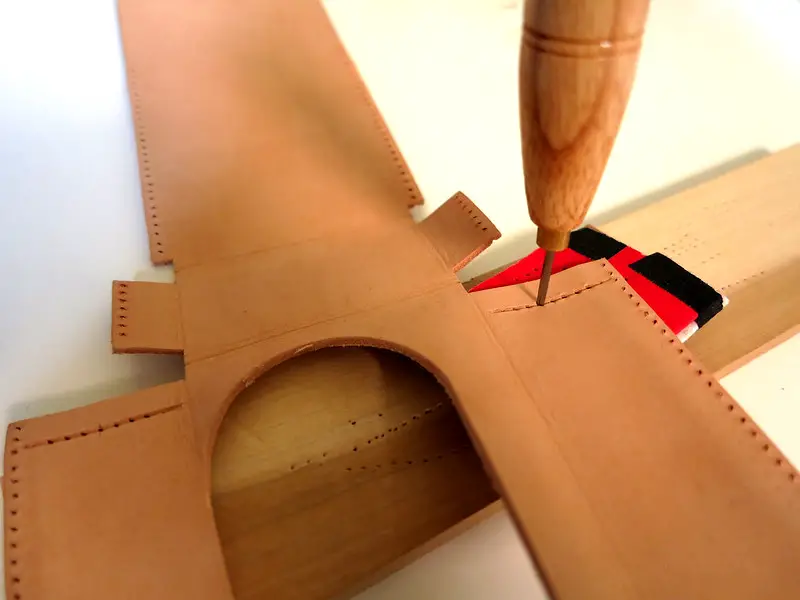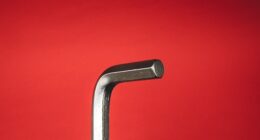A bodkin is a pointed tool that is used for piercing holes, while an awl is a sharpened tool that is used for making holes. Both bodkins and awls are used for piercing and/or stitching purposes. Awls are typically larger and have a sharper point, making them better for puncturing through thick fabrics.
What is a bodkin?
A bodkin is a type of needle or pointed tool that is used for various purposes, such as sewing, piercing or making holes. The term “bodkin” originally referred to a small, thin dagger or dagger-like tool, but over time it has come to refer to a range of different types of pointed tools.
Historically, bodkins were commonly used in sewing and tailoring to thread needles or to create small, precise holes in fabrics for decorative or functional purposes. They were also used in embroidery to create fine details or to pierce holes for stitching.
Bodkins were also used in other industries, such as leatherworking and bookbinding. In leatherworking, bodkins were used to create holes for stitching leather or to weave a lace through the leather to create a decorative effect. In bookbinding, bodkins were used to pierce holes in the paper or binding material to create a sewing station for binding the pages together.
In modern times, bodkins are still used for various purposes. They are commonly used in crafting and jewelry-making to create small holes or to thread beads onto cords. They are also used in fishing to thread fishing line through small spaces in the bait or lure.
Overall, a bodkin is a versatile tool with a pointed end that can be used for a range of purposes in various industries and crafts.
What is an awl?
(Photo By Andrew Magill on Flickr)

An awl is a pointed tool that is used for making holes or marking surfaces. It consists of a handle, typically made of wood or plastic, and a pointed metal shaft that tapers to a fine point. The tip of the awl is typically sharp and can be used to puncture a variety of materials, such as leather, wood, or even metal.
The primary use of an awl is for making small holes in materials that may be difficult to pierce with a regular needle or pin. For example, in leatherworking, an awl is used to create holes for stitching or to punch through thick layers of leather. In woodworking, an awl is used to mark the location of a hole before drilling, or to create a starter hole for a screw or nail.
The sharp point of an awl can also be used for scoring or scratching materials, such as when marking a line to be cut or when making decorative patterns on wood or leather.
There are different types of awls that are designed for specific purposes. For example, a scratch awl has a straight shaft and is used for marking lines or making starter holes. A brad awl has a tapered shaft and is used for creating holes for small nails or brads. A sewing awl has a hooked tip and is used for stitching heavy materials like leather or canvas.
Overall, the awl is a versatile tool that can be used for a variety of tasks in different industries, including woodworking, leatherworking, and sewing. Its sharp, pointed tip makes it an ideal choice for creating small, precise holes or for marking surfaces with accuracy.
Bodkin Vs. Awl – Key differences
While bodkins and awls are both pointed tools that are used for making holes and piercing materials, there are some key differences between the two.
Shape: The most obvious difference between bodkins and awls is their shape. Bodkins typically have a long, thin needle-like shape, whereas awls have a thicker, more tapered shaft with a pointed tip.
Purpose: While both tools are used for making holes, bodkins are primarily used for threading needles or creating small holes in fabric for decorative purposes, while awls are typically used for creating larger holes in tougher materials like leather, wood, and metal.
Handle: Bodkins generally have a small, thin handle that is designed for easy manipulation when threading needles, whereas awls have a larger handle that is designed for applying more force when creating holes.
Variations: There are many different types of awls that are designed for specific purposes, such as scratch awls, brad awls, and sewing awls. Bodkins, on the other hand, are typically less specialized and are used primarily for sewing and embroidery.
The main differences between bodkins and awls come down to their shape, purpose, handle, and variations. Bodkins are best suited for creating small, precise holes in fabrics, while awls are better for creating larger holes in tougher materials.
What are the types of Awl’s?
There are several different types of awls that are designed for specific purposes. Here are some of the most common types of awls:
Scratch Awl: This is a basic type of awl that has a straight shaft and a sharp, pointed tip. It is used for marking or scoring materials before cutting, drilling or screwing.
Brad Awl: This type of awl has a tapered shaft and is used for creating small holes for brads or nails. It is commonly used in woodworking.
Sewing Awl: This type of awl has a hooked tip that is used for stitching heavy materials like leather or canvas. It is commonly used in leatherworking and upholstery.
Saddler’s Awl: This type of awl has a sharp, pointed tip and a large handle that provides a comfortable grip for applying force. It is commonly used in leatherworking for creating holes for stitching.
Diamond Awl: This type of awl has a diamond-shaped tip that is used for creating larger holes in tough materials like leather or rubber. It is commonly used in shoemaking and leatherworking.
Bradawl: Similar to a brad awl, this type of awl has a straight, tapered shaft and is used for creating small holes for nails or screws. It is commonly used in woodworking.
Hollow Awl: This type of awl has a hollow shaft that is used for punching holes in leather or other materials. It is commonly used in leatherworking and can be used to create holes of varying sizes.
The type of awl that is used will depend on the specific task and the materials being worked with. Each type of awl has its own unique shape and features that make it suited for specific tasks.
Featured Image By – Daniel Rodríguez Delgado from Pixabay








